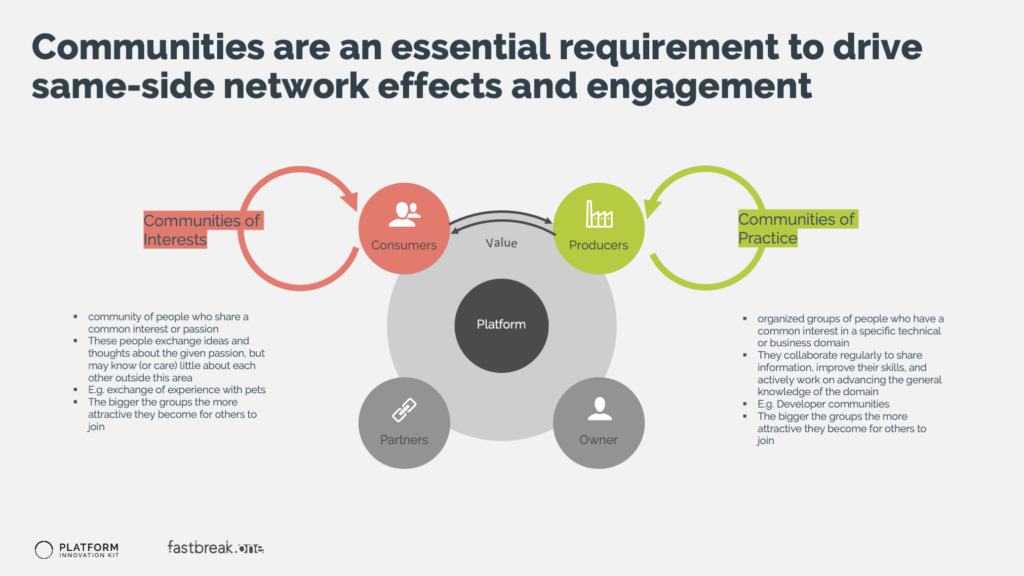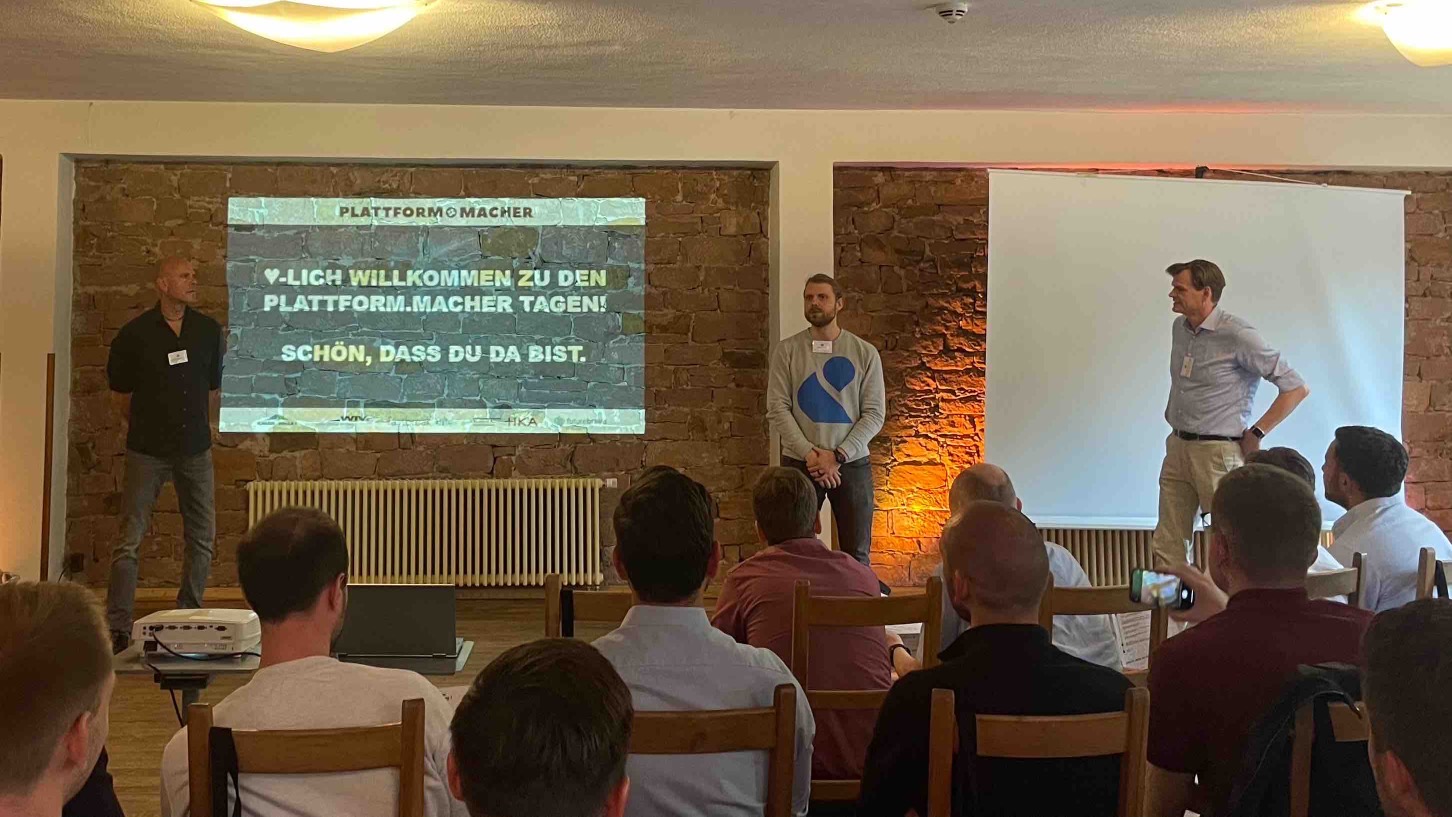Through a conversation with Adam Broadway, CEO and founder of platformOS, a leading innovation platform, we explore the role and impact of communities on growth and network effects.
Intro
In our third episode of the “Platforms 4 Future” podcast, we had a conversation with Adam Broadway, CEO of platformOS (www.platformOS.com), an innovation platform to help platform founders quickly develop their platform architecture.
But we did not talk about IT infrastructure or architecture with him. No, we talked about communities, the major advantages they provide for your platform, and what are successfactors of building and running a community.
How to leverage communities to unlock network effects
What are communities of interests & practice?
The first thing we clarified is the definition of the different types of communities:
“Community of interest are the hobbyists, they’re the weekend warriors, their livelihood doesn’t depend on that community. and the community of practice are the practitioners, they’re the people who generally, they’re the guilds.”
Mapping them to the different sides of a platform, we see that “communities of interest” are mainly on the consumer-side (demand-side) and the “communities of practice” are mainly on the producer-side (supply-side) of a platform.
After we clarified the definition, we talked about the different advantages for you as a platform owner.
Advantage #1: Help the supply-side better leverage your platform
Adam continues: “I think it’s really important for anybody building a marketplace to focus on the communities of practice.”
Why that? Why are the communities on the producer-side so important? Simply because those are the people who are providing the goods / services exchanged via the platform. And your role as a platform owner is to help them to flourish, and become successful. One way is to facilitate exchange of information and best practices between them. And here, a well managed community helps to provide a protected environment where those people can exchange.
Looking at some examples, Adam mentioned DevMesh. This is Intel’s community platform that was created for communities of interest and practice.
He explains: “It’s taken off in a huge way and that’s a great example of where they have both the community of interest and the community of practice. Now, of course Intel has groups on Facebook, but when it comes to those people who are interested in artificial intelligence, IOT and developing with the whole suite of Intel’s various products, DevMesh is a community now, the workflows are according to Intel’s requirements, they own all the data, and they get the feedback from their community on how to improve it and so that’s one example.”
Advantage #2: Communities are a great source for market research & product development
As you can see, there are major advantages of running the communities, not on major social media platforms like facebook. Owning the data mainly as a great source for market research and understanding the needs of your users is key for every platform. But, if you leverage a social media platform like facebook, you then risk not owning the data and not being able to analyze it.
Advantage #3: Same-Side network effects
But there is also the same-side network effect that will start to kick-in. Adam talks about his experience in building a platform called Catalyst: “And so, there began to be a marketplace within the marketplace, just for the practitioners offering products, services, and even templated solutions that they had developed, and that they then provided to other practitioners within the network.”
Another example here would be WordPress, where you see that add-on providers will help website agencies and administrators to leverage plug-ins or templates to build websites faster for their clients.
Advantage #4: Linking CRM data and community data for highly individualized sales
At this point Adam displays his full experience of building communities for years. Pointing us towards the next evolution of communities and how they can be leveraged in linking them to sales processes.
“So I think the connectivity between that data, those subgroups, the influence across tight-knit peer groups to surface it within other systems is going to be the next step in the value prop for communities of practice and the data that they provide.”
What does this mean? He uses an example of someone who is owning an old car which requires a service. On the one hand the guy is only a small customer based on CRM data as he is owning an old car and is not spending a lot of money. But on the other hand he is a huge influencer online and within his neighborhood. Looking at the community data you can understand this value. So linking both can help you make better decisions if you would prioritize his service request because he will then speak very positively about it.
Key Success factors
Understanding the value of a community is one thing, building it the other one. One major success factor is to build the community on your own terms.
“A real community of practice generally wants to build their own community on their own terms with their own customer experience, user experience, and own all the data and not have it hijacked by a separate social media company who gives them enough features to make it work, but ultimately that company wants to own the community. Practitioners need to own their own communities and drive it, so that’s probably a good analogy.” Adam explains.
And he continues “if it’s a community of practice at least, should be on a separate system that takes away the distraction and provides the customer experience, user experience that’s specific to your industry niche and specialization”.
The value of the data exchanged within a community is so high, each platform needs to carefully protect it and should avoid putting it on social media platforms like facebook, where they will quickly lose control over the data and face risks of data fraud.
Summarizing it, Adam says: “And if you don’t own your data, you don’t own your business and that’s the big problem and I think that the positives and the negatives need to be weighed up and that’s where I believe that communities of practice and associations and practitioners in any vertical or niche need to own their own data, own their own ecosystem and their own platform to be in control of their destiny. Otherwise, you just handed over your entire business to that big platform who now owns and runs you”
Leading to his key advice for platform owners:
“So I think the number one takeaway is don’t rush into building on a platform, whether it’s ours or Facebook or any other without knowing the long-term objective of that business and is this business model for your platform going to be sustainable for planet, for people, for profit, but also ultimately, do you have control over it?”
Adam Broadway, CEO platformOS
And we only can underline this statement: Communities are well under-represented in any platform strategy, but they are a crucial part of success. Ensure that you take care of them.
Thank you Adam for the great insights.
The complete episode can be listed at your favorite podcast provider.




